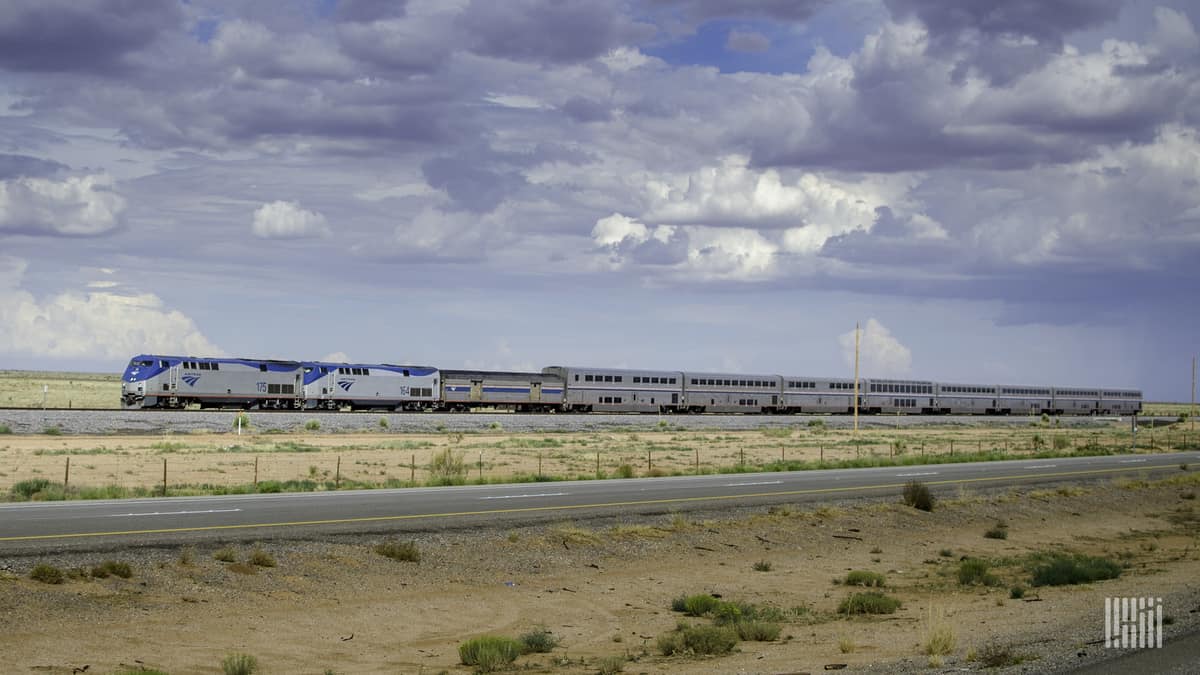Although the Federal Railroad Administration (FRA) has finalized the rule that defines on-time performance metrics for Amtrak, the Association of American Railroads (AAR) is hoping some outstanding issues will be addressed following the rule’s implementation.
One of the issues is ensuring that Amtrak’s published schedule for the traveling public gets updated so that it can better align with FRA’s on-time performance (OTP) metrics.
“While the proposed rule uses published schedules to measure the customer on-time performance of an Amtrak train, unless the schedules are updated to reflect current conditions and the new metric proposed by FRA, they will give rise to misleading OTP measurements, create unrealistic expectations, and lead to unnecessary litigation” at the Surface Transportation Board (STB), said AAR President Ian Jefferies in written testimony at a Nov. 18 hearing before the U.S. House Committee on Transportation and Infrastructure. The hearing was on defining STB’s role in ensuring a robust passenger rail system.
Amtrak uses the freight rail network in some areas of the U.S., such as the Northeast and Illinois, and the freight railroads must give Amtrak preferential access, according to a government mandate.
Meanwhile, the OTP rule published on Nov. 16 requires Amtrak and host railroads to certify Amtrak schedules and set an on-time performance minimum standard of 80% for any two consecutive calendar quarters.
Other questions are how the OTP rule will assess the performance of each individual host railroad on a route with multiple hosts, and how the rule will account for factors such as train speed reductions because of safety concerns or track and signal maintenance, according to Jefferies.
“If one host continually delivers a train late to another host, the OTP metric would not be satisfied, and the receiving host could be subject to an STB investigation,” Jefferies said.
He continued, “Indeed, the FRA acknowledges in the rule that any individual Amtrak customer may travel over the lines of multiple individual host railroads, and that ‘the customer OTP metric does not easily distinguish performance on individual host railroads.’ Although the proposed rule includes other metrics that more directly focus on host-specific performance, such as measuring minutes of delay, it is the OTP standard that determines when hosts may be subjected to an STB investigation.”
For host freight railroads to monitor and improve their performance against an OTP metric, the railroads need a close-to-real-time electronic feed of recent, current and forecast station-specific ridership data on top of historical data to analyze schedules, Jefferies said.
“Keeping both Amtrak and freight trains running on time is a tremendously complex issue, but bringing finality to the statutory mandate with an appropriate metric measured against accurate and attainable schedules will create certainty for Amtrak, the host railroads, and, most importantly, the traveling public,” Jefferies said.
Although the rule has been finalized, the STB could address AAR’s concerns as the board navigates and arbitrates potential service issues following the implementation of the performance metrics.
Subscribe to FreightWaves’ e-newsletters and get the latest insights on freight right in your inbox.
Click here for more FreightWaves articles by Joanna Marsh.
Related articles:
Federal Railroad Administration finalizes on-time performance rule
Federal Railroad Administration proposes on-time performance metrics for Amtrak
US Supreme Court ruling paves way for performance metrics for rail
Senator introduces bill penalizing sub-standard on-time performance











